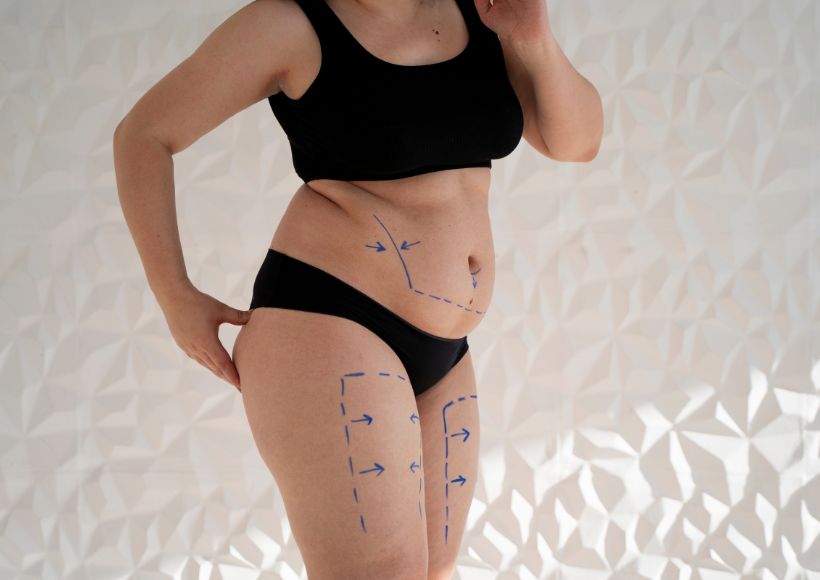Do you have atypical fat accumulation in your legs or arms? Then you may have lipedema . Although this disease is usually associated with obesity or overweight, lipedema is a very little-known pathology, the consequences of which can be very serious if it is not properly diagnosed and treated.
Table of Contents
What is lipedema?
Lipedema is a condition characterized by the proliferation and inflammation of adipose tissue cells in the upper or lower extremities. This causes a decompensation between the different parts of the body and, as the condition gains intensity, other more pronounced symptoms arise that considerably reduce the patient’s well-being.
It usually affects women mostly and cases have very rarely been seen in men. Depending on the magnitude of the disease, there are different degrees:
- Grade I : the skin surface is regular and soft. Tiny fat nodules are palpable.
- Grade II: The skin surface is irregular and hard due to increased nodule formation.
- Grade III: the surface of the skin is deformed due to excess adipose tissue. The number of nodules is greater, of different sizes and are distributed mainly on the hips and ankles.
Where does lipedema usually appear?
As we have mentioned, lipedema can appear in the legs and arms . However, it is the cells of the lower extremities that are most frequently affected.
What symptoms allow you to identify lipedema?
In addition to the increase in volume, lipedema is always accompanied by a series of symptoms. These are varied and intensify over time. Below we show you the most common manifestations:
- Swelling and swelling : the patient may feel pressure and heaviness in the legs continuously. This does not usually decrease by raising the legs or with localized massages.
- Telangiectasias (spider veins): the surface of the skin presents red, purple or blue marks produced by the dilation of small capillaries.
- Hard subcutaneous tissue: The skin on the legs and arms has a hard consistency due to fatty nodules.
- Increase in volume : it is mainly observed in the lower limbs (97%). This manifestation is usually bilateral and almost symmetrical in both extremities (right and left leg or right and left arm). The feet and hands are usually not affected.
- Greater sensitivity : it is common for the patient to feel pain when touched. For example, when they grab your arm or lean on your legs.
- Decreased elasticity in the skin: the tissue appears more rigid. The patient may have problems bending the knee and ankle.
- Pain: discomfort usually appears that worsens over time. This pain is spontaneous and can affect the person even when they are at rest. Furthermore, it usually increases with the practice of physical exercise.
- Trophic changes in the skin: occur in the most advanced stages. The most common are hyperpigmentation and dermatosclerosis (hard skin).
Causes that cause the formation of lipedema
Currently, the true origin of lipedema is still unknown. A priori, it is usually thought that its main cause is an unhealthy lifestyle (poor diet and sedentary lifestyle) that promotes the accumulation of fatty tissue. Nothing is further from reality. Although the causes are not clear, it is thought that its development is closely related to hormonal disorders.
This is because its manifestation and worsening occurs after puberty, pregnancy, menopause or taking the pill. Likewise, it has been proven that there is a genetic component that affects the predisposition to lipedema.
The lack of an obvious origin makes the diagnosis of the disease difficult. For this reason, many patients feel frustrated when going to a specialist and receiving evaluations such as “tired legs,” “poor circulation,” or “obesity.”
What is the treatment for lipedema?
Diagnosing lipedema is complicated, but possible . Therefore, it is important to put yourself in the hands of an expert in this specific pathology. The health tips professional must perform a detailed physical examination of the patient and study his or her clinical history (history and evolution). In the event that the final result indicates that the person suffers from the disease, two types of treatments can be chosen:
- Conservative: helps the patient reduce some of the symptoms and relieve pain, but the disproportion decreases slightly. It is done through manual lymphatic drainage and therapies to minimize fibrosis and increase fluid flow through the skin. In addition, it is recommended to use lymphatic compression garments and physical activity in the water (swimming).
Surgical: this is liposuction assisted by pressurized water ( Water – Jet Assisted Liposuction ). This procedure prevents the ducts and lymph nodes from being damaged during liposuction. However, it is a technique that has only been on the market for a short time, so its long-term effects and all the risks it entails are not yet known.
Also Read : Professional Treatments For Post-Depilation

